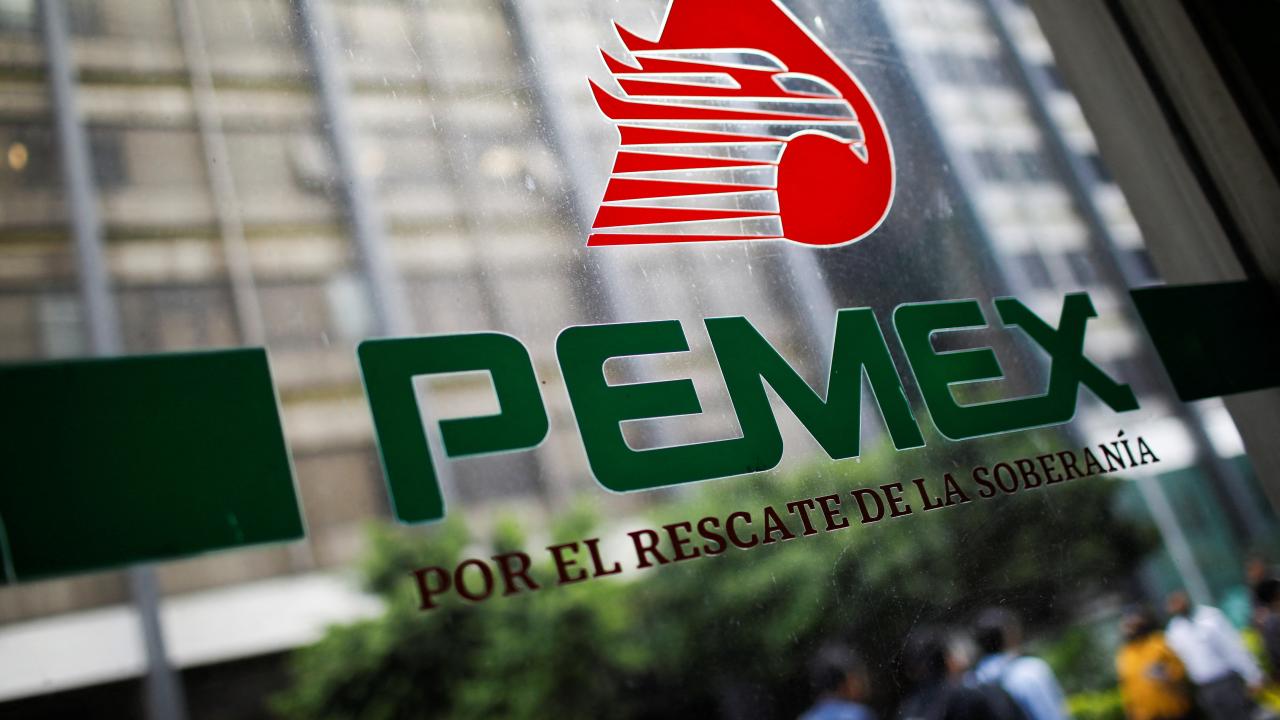
To meet the crude oil processing goal of just over one million barrels per day for all of 2024, Petróleos Mexicanos would have to process 1,043 million barrels of crude oil per day on average from June to December.
The crude oil process of the six Petróleos Mexicanos (Pemex) refineries stood at 842,043 barrels per day last May, which was the lowest in 2024, only above that reported in December of last year, in addition to It was 11.3% lower than what the oil company registered in April. This volume implied a use of 51.3% of the installed capacity, of 1,641 million barrels per day.
However, this volume is still below the goal that was committed at the beginning of the administration, in which the then head of Energy, Rocío Nahle, committed 1.2 million barrels per day, or at least a use of 73 % of the capacity of this National Refining System, by 2024.
In fact, this process volume reduced the average for the first five months of the year to 948,798 barrels per day, which, until April, was 975,489 barrels per day.
The company's general director, Octavio Romero Oropeza, said last week in his presentation at the Mexican Petroleum Congress in Tampico, Tamaulipas, that by the end of 2024, the refineries are expected to achieve a process volume of 1,004 million barrels per day. .
This would imply a utilization of 61% of the capacity. But with the levels that have been achieved so far, it will be necessary to process 1,043 million barrels of crude oil per day in the refineries from June to December, which would imply raising the average production by 10% or almost 100,000 barrels per day with respect to the level current.
The general director of Pemex also assured that the rehabilitation of the six refineries in the national territory involves investments of US$ 2,661.7 million in the six-year period, which managed to increase from 507,000 barrels per day reported in January 2019, to the volume reported in May, that is, 66% of the national crude oil process.
For this it was necessary to change some of the large equipment in the six refineries, acquire spare parts and replace infrastructure in all the centers.
However, pending is the entry into operation of a new coker that will purify heavy products such as fuel oil to transform them into more expensive fuels, such as automotive gasoline, in Tula, Hidalgo, whose inauguration will take place this year, in addition to a similar team in Salina. Cruz, Oaxaca, which is 64% complete and will be ready in 2025, according to Romero Oropeza.
Results per plant
By refinery, and due to the fact that scheduled stoppages are carried out for rehabilitation, the following process levels were reached: Cadereyta, in Nuevo León, reached 89,084 barrels per day, with a use of 32% of its capacity, after constant decreases since the beginning of this year, when usage had reached 61%.
Madero, in Tamaulipas, reached 127,254 barrels per day, with a use of 67%, after the previous month it had managed to bring this center - which was not producing at the beginning of the six-year term - to a use of 73% of its capacity .
Minatitlán, Veracruz, had a process of 90,226 barrels per day, which was also reduced to 32%, after last year this refinery was already brought to 54% of its capacity; Salamanca, Guanajuato, reported 154,895 barrels per day and a use of 63%, the highest in recent years; Salina Cruz, Oaxaca, reached 242,134 barrels per day, with a use of 73%, which is also the highest, and finally Tula, Hidalgo, 138,450 barrels per day, 44% of its capacity, awaiting the new equipment in the process of being installed. facility.
Product preparation
By processing less crude oil in the system, fuel production was also reduced. In May, a volume of 833,280 barrels per day was reported in the production of all petroleum products, which was 11% lower than in April. Although it is also the lowest level so far this year, it was 3.1% higher than the same month in 2023, and has increased by 28% so far in the six-year term.
It stands out that the production of automotive gasoline, of 266,983 barrels per day, had a monthly drop of 10%. But the annual increase was 2.1% in its production, while so far this six-year term it has increased by 74%.
Diesel production was 144,657 barrels per day, which was the lowest since November of last year, with a monthly reduction of 24%. Diesel manufacturing was practically the same as in the first months of the administration - even lower than in June 2019.
The production of ultra-low sulfur diesel, which according to the federal Executive is already manufactured within the new Olmeca refinery in Paraíso, Tabasco, was 75,322 barrels per day in the rest of the refineries during May and of this volume it is notable that no barrel at the Tampico refinery, Tamaulipas, since according to sources inside the new refinery and the federal Executive, tests are being carried out in this new plant near the port of Dos Bocas, but not from the crude oil process, but with diesel that is transformed and sold into an ultra-low sulfur product.
Pemex TRI: losses
Increasing Pemex's refining activity responds to President López Obrador's mandate that Mexico eliminate its dependence on imported fuels, which still represented 68.5% of the gasoline supply last year.
However, Pemex's Industrial Transformation subsidiary (Pemex TRI) operates at a loss. Last year it had a negative net return of US$4,104.7 million, according to the company's financial statements for the fourth quarter.
It stands out that the subsidiary company even has a negative gross return, which means that it has losses even before subtracting administration, distribution and financial costs.









